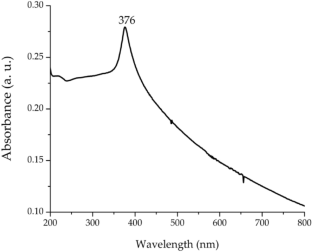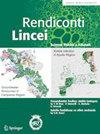共轭锌纳米颗粒抗ccl4诱导肝硬化大鼠模型的分子机制
IF 2.7
4区 综合性期刊
Q2 MULTIDISCIPLINARY SCIENCES
引用次数: 0
摘要
该研究旨在开发和分析一种共轭锌纳米颗粒配方,通过增加其生物利用度和释放度来增强其抗肝硬化活性。采用标准表征程序制备和分析锌纳米颗粒。采用增强制剂对大鼠进行药物释放和肝硬化模型试验。灌胃给药30 d。研究结束后,将大鼠麻醉后屠宰,进行血清生化检验。研究肝组织中基因和microrna (miRNAs)的表达;以及肝脏特异性基因和炎症标志物的表达。这些发现也得到了肝组织组织学和免疫组织化学(IHC)研究的证实。测量技术证明了ZnNPs的合成和共轭的实用性。纳米杂化ZnNPs具有显著的抗肝硬化治疗活性。ZnNPs的抗肝硬化特性降低了TGFR1和COL3A1的表达,因为它们增强了保护肝硬化的mirna的产生。此外,在ZnNPs处理组中,癌症标志物(AFP, p53)的表达下调/上调。同样,与未治疗组相比,ZnNPs组的促炎性和抗炎标志物表达正常化。组织病理学和免疫组化分析进一步验证了这些结果,表明ZnNPs具有抗纤维化特性。最后,我们得出结论,在成功合成的ZnNPs中,我们分别达到了94%和36.63%的负载能力。此外,ZnNPs通过下调肝癌标志物和上调肝功能标志物显示出体内肝保护活性,这保证了ZnNPs在未来研究中用于治疗肝硬化。本文章由计算机程序翻译,如有差异,请以英文原文为准。

Molecular mechanisms of conjugated zinc nano-particles for nano drug delivery against hepatic cirrhosis in CCl4-induced rats model
The study aimed to develop and analyze a conjugated zinc Nano particle formulation that would enhance its anti-cirrhosis activity by increasing its bioavailability and release. Standard characterization procedures were used to create and analyze zinc nano particles (ZNPs). Drug release and hepatic cirrhosis model testing were conducted on rats utilizing the enhanced formulation. For 30 days, ZnNPs were supplied through oral gavage. For biochemical examination of serum samples, rats were anesthetized and slaughtered after the research. The expression of genes and microRNAs (miRNAs) in liver tissues was studied; together with expression of liver specific genes and inflammatory markers. These findings were also validated by liver tissue histological and immune histochemical (IHC) studies. Measuring techniques demonstrated the practical synthesis and conjugation of ZnNPs. Nanohybrid ZnNPs showed significant anticirrhosis therapeutic activity. ZnNPs' anti-cirrhosis properties decrease TGFR1 and COL3A1 expression, because they enhance the production of miRNAs that protect against cirrhosis. Furthermore, the expression of cancer markers (AFP, p53) was down/up-regulated in ZnNPs treated groups. Similarly, the pro- and anti-inflammatory markers expressions were found normalized in ZnNPs groups compared to untreated groups. These results were further validated by histopathology and IHC analysis, which showed that ZnNPs have anti-fibrotic properties. We finally, conclude that the that we achieve loading capacity of 94%, 36.63%, respectively, in the successful synthesis of ZnNPs. Furthermore, ZnNPs exhibits in vivo hepato-protective activity by down-regulating hepatic cancer markers and upregulating hepatic functional markers which assure the use of ZnNPs for the treatment of liver cirrhosis in future studies.
求助全文
通过发布文献求助,成功后即可免费获取论文全文。
去求助
来源期刊

Rendiconti Lincei-Scienze Fisiche E Naturali
MULTIDISCIPLINARY SCIENCES-
CiteScore
4.10
自引率
10.00%
发文量
70
审稿时长
>12 weeks
期刊介绍:
Rendiconti is the interdisciplinary scientific journal of the Accademia dei Lincei, the Italian National Academy, situated in Rome, which publishes original articles in the fi elds of geosciences, envi ronmental sciences, and biological and biomedi cal sciences. Particular interest is accorded to papers dealing with modern trends in the natural sciences, with interdisciplinary relationships and with the roots and historical development of these disciplines.
 求助内容:
求助内容: 应助结果提醒方式:
应助结果提醒方式:


